In the realm of horticulture, one practice stands out as essential for maintaining the health and vibrancy of your garden: deadheading.
Pruning 101: Key to Garden Health
In the gardening world, pruning stands as one of the most critical practices every experienced gardener and landscaping professional should master. It’s a horticultural art that requires precision, knowledge, and an understanding of plant biology.
But what exactly is pruning, and why is it so important in maintaining garden health? Where do we make out cuts to ensure our plants achieve the desired shape? And is it true that you shouldn’t prune Aussie natives?
Let’s dive into it.
- The Definition of Pruning: A Closer Look
- Pruning: A Pillar of Plant Health and Growth
- Timing Your Prune: The Seasonal Art
- Different Types of Pruning
- Guidelines for Pruning
- Busting the Myth: Native Plants Do Need Pruning
- More Pruning Mythbusting
- Basic Pruning Techniques
- Understanding Pruning Cuts
- The ABCs of Pruning
- Safety Precautions and Necessary Equipment
- Grevilleas
- Bottle Brushes, a.k.a. Callistemons
- Lomandras
- Anigozanthos, a.k.a. Kangaroo Paw
- Daniel’s Wrap
The Definition of Pruning: A Closer Look
Pruning, in its simplest form, is the methodical removal of certain parts of a plant—be it branches, buds, leaves or roots.
The process goes beyond mere cutting, though. It’s a calculated technique, aimed at improving a plant’s health, promoting its growth, and shaping it to conform to the aesthetic standards of your garden’s design.
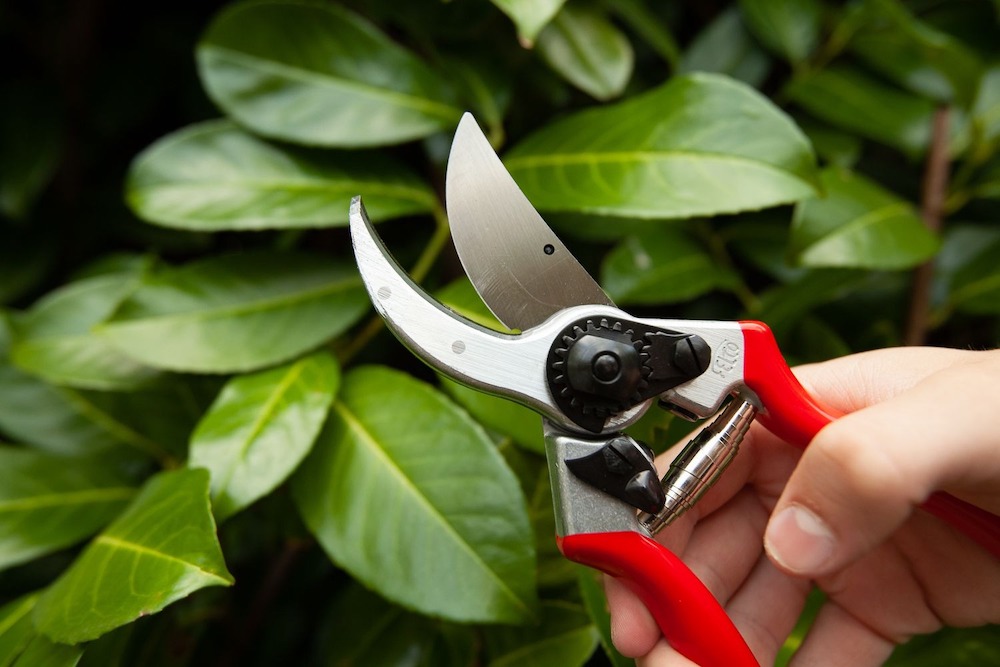
Pruning is a strategic dialogue with nature. It’s about listening to the plant—understanding its growth patterns, discerning its needs, understanding how far you can push it to conform to the shape you’re looking for, and acting accordingly.
This conversation might seem complex, especially for beginners, but with time and practice, it becomes an instinctive part of maintaining your green space.
Pruning: A Pillar of Plant Health and Growth
Pruning plays a dual role—it’s both a preventive and a promotive procedure for your plants’ health and growth. On the preventive side, pruning involves the removal of dead, damaged, or diseased stems, which might be hogging resources or attracting pests.
By eliminating these parts, you’re not only preventing potential diseases from spreading but also reducing the chance of pest infestations. This proactive approach can save you from bigger problems down the line, keeping your garden vibrant and healthy.
However, it should be noted that dead wood can provide habitat for a wide range of native insects and critters, so consider which values are more important to you: aesthetics and plant health, or providing habitat. On the promotive side, pruning stimulates plant growth by redirecting the plant’s energy towards creating new, healthy foliage and blossoms.
When you cut back overgrown branches, the plant responds by producing a flush of new growth. This is particularly beneficial for many fruit-bearing and flowering plants, where pruning can enhance yield and increase bloom.
Moreover, regular pruning can help maintain a balanced and pleasing shape, contributing to both the plant’s structural integrity and the overall aesthetics of your garden. It’s also important to note that some plants are more sensitive to the amount of pruning than others.
Beech trees don’t like it when you make large pruning cuts, for example. There’s a “rule” amongst horticulturists to avoid removing more than a third of the plant’s foliage at any one time, but it really depends on the plant type.
Roses love a proper hard prune every winter, and even though they look like sticks afterwards, they bounce back more vigorous than ever in spring.
Timing Your Prune: The Seasonal Art
The timing of your prune can significantly impact the effectiveness of the exercise. The golden rule is to prune at a time that best supports the plant’s natural growth cycle.
For most deciduous trees and shrubs, late winter or early spring—just before the onset of new growth—is the ideal time to prune. This allows the plant to channel its energy into producing fresh shoots and leaves once the warmer weather sets in. Also, wounds resulting from pruning heal faster during this period, reducing the risk of disease or pest entry.
However, this rule doesn’t apply across the board. For instance, spring-blooming plants, like azaleas and lilacs, develop their flower buds during the previous summer. Pruning them in late winter or early spring inadvertently removes these buds. For these species, it’s best to prune immediately after their blooming period.
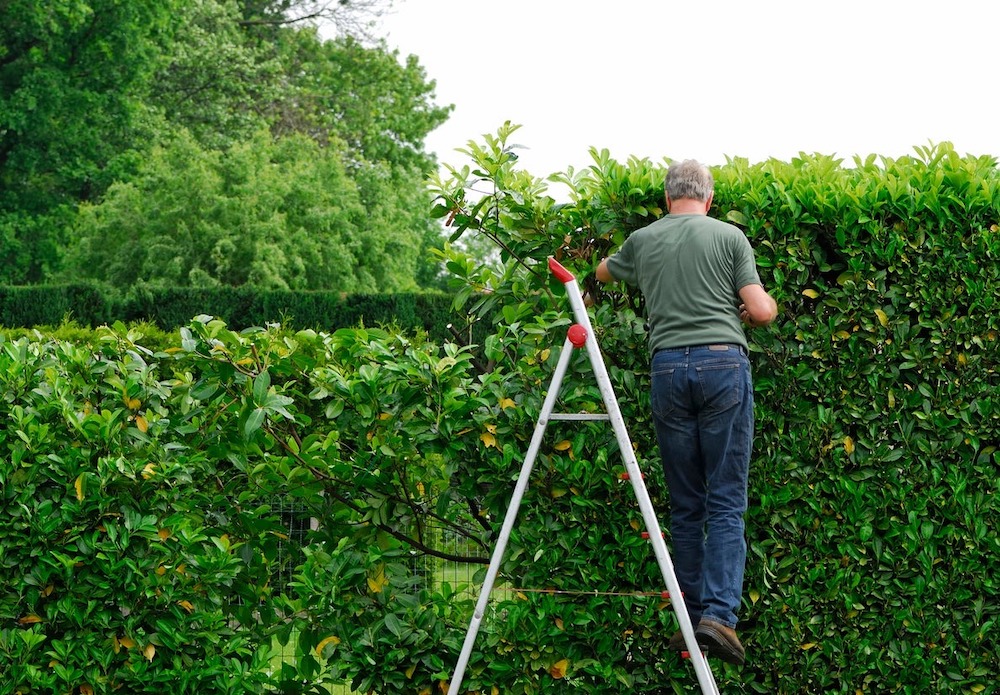
Different Types of Pruning
As we delve further into the art of pruning, it’s important to understand that not all pruning techniques are created equal. Different plants and different objectives require different styles of pruning.
In this section, we’ll explore two key types of pruning: hedging and maintaining natural shape.
Hedge Pruning
Hedging is a form of pruning primarily used to maintain a defined shape or boundary within your garden. It involves trimming a shrub into geometric shapes or a flat plane. This type of pruning is often seen in formal gardens, topiaries, or anywhere you need to create a living fence or border.
It’s also the result of continuous non-selective pruning cuts to keep branches off a pathway, which we’ll discuss shortly. The timing of hedging varies based on the type of plant and its growth rate.
For fast-growing hedges, frequent trimming during the growing season may be necessary to maintain the desired shape. However, for slower-growing species, pruning once or twice a year might suffice.
Hedging offers numerous benefits. It can provide a clean, manicured look to your landscape, adding structure and design. Additionally, regular hedging promotes dense growth, creating a thick, lush barrier that can offer privacy and noise reduction.
Expert Tip:
When hedging, make the base of the hedge wider than the top. This trapezoid shape allows sunlight to reach the lower branches, promoting even growth throughout the hedge.
Pruning to Maintain Natural Shape
Unlike hedging, which imposes a particular shape onto a plant, this type of pruning aims to enhance a plant’s natural form. It’s about working with the inherent growth pattern of the plant to highlight its innate beauty.
The best time to perform this type of pruning is often during the dormant season—late winter or early spring for many plants. However, any dead, diseased, or damaged branches can be removed as soon as they’re noticed, regardless of the season.
This won’t cause any stress to your plants. Pruning to maintain natural shape can offer several benefits. It helps preserve the plant’s health by removing unhealthy wood, thus preventing the spread of disease and pests.
It also encourages stronger growth by reducing competition for resources among branches. Lastly, it enhances the aesthetic value of the plant, showcasing its natural beauty rather than forcing it into an artificial form.
Expert Tip:
When pruning to maintain natural shape, remember to prune branches back to a natural fork to avoid leaving stubs. Stubs can die back and provide an entry point for pests and diseases.
While each type of pruning has its unique uses and benefits, they both share a common goal: promoting plant health and enhancing the overall aesthetics of your garden. By understanding these techniques and applying them appropriately, you can ensure your garden thrives and looks its best.
Key Takeaway:
Pruning isn’t a one-size-fits-all practice. Understanding different pruning techniques and their specific applications is vital to optimizing your garden’s health and visual appeal.
Whether you’re hedging for precision or pruning to highlight natural beauty, each snip is a step towards a healthier, more vibrant garden.
Guidelines for Pruning
Here are some guidelines to dispel the myth and prune your plants effectively:
- Understand Your Plant: Different plants have diverse growth habits and responses to pruning. Some may bounce back from heavy pruning, while others prefer a lighter touch. Research or consult an expert on your specific native species before you start making cuts.
- Time it Right: Many plants should be pruned during their dormant season, which often aligns with the late winter or early spring months. However, it’s a good idea verify the ideal pruning time for each species to avoid disrupting their natural growth cycle.
- Choose the Appropriate Technique: From removal cuts for dead wood to selective heading cuts for controlling size and shape, the pruning technique should be chosen based on the plant’s needs and your desired outcome. We’ll go over these shortly.
- Maintain Sharp and Clean Tools: Prevent disease spread and ensure quick healing by using sharp tools for clean cuts and sanitizing your tools between each plant.
Expert Tip:
While your plants may be resilient, it’s crucial to approach pruning with a ‘less is more’ attitude. Over-pruning can stress the plant and lead to weak, sparse growth.
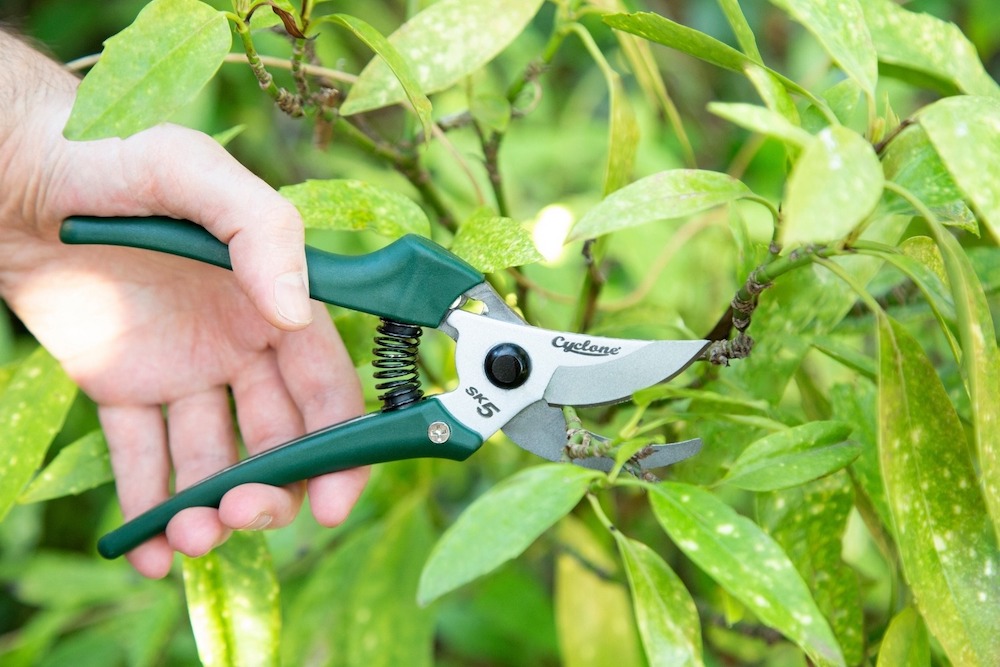
Busting the Myth: Native Plants Do Need Pruning
One of the most persistent misconceptions in gardening is that native plants, due to their inherent adaptability to local conditions, don’t need pruning. However, this couldn’t be further from the truth. While many natives are indeed hardy and low-maintenance compared to some exotic species, native plants can significantly benefit from occasional, well-planned pruning.
The Reality: Pruning Enhances Native Plants’ Health & Beauty
Native plants don’t know they’re native. That’s a category we put on them as humans. All plants are unique in their needs, and native plants are no exception. Just like any other plants in your garden, they can greatly benefit from pruning. It helps them in all of the same ways that it helps other plants.
While they might do just fine without any pruning, you’ll help them reach their true aesthetic potential by showing them the same tender loving care that you show the other plants in your garden.
Key Takeaway:
The belief that native plants don’t need pruning is a myth. With thoughtful, well-timed pruning, you can boost the health and visual appeal of your native plants, contributing to a garden that truly reflects the beauty of your local ecosystem.
More Pruning Mythbusting
Pruning is shrouded in many myths and misconceptions that can lead to more harm than good for your plants. In this section, let’s debunk some more of these common pruning myths.
Myth 1: Pruning Should Always be Done in Spring
This is a prevalent myth that has led to many a plant being pruned at the wrong time. The truth is, the best time for pruning varies with each plant species. For example, spring-blooming shrubs and trees should be pruned immediately after flowering, not in early spring as they set their buds the previous year.
Myth 2: Wound Dressings Help Trees Heal
Many gardeners believe that applying wound dressings or sealants after pruning helps trees heal faster. However, research has shown that these products do not speed up healing and may even slow it down by creating a barrier against the tree’s natural healing process.
Myth 3: Cut Close to the Trunk for Faster Healing
Contrary to popular belief, flush cuts made close to the trunk can cause considerable damage. Instead, cuts should be made just outside the branch collar – the swollen area where the branch meets the main trunk or another branch. This practice allows the tree to heal more efficiently.
Myth 4: More Fertiliser Promotes Healing
While it’s true that nutrients are vital for plant health, over-fertilizing after pruning can lead to excessive, weak growth that’s more susceptible to pests and disease. It’s better to provide balanced nutrition and let the plant recover at its own pace.
Myth 5: All Pruning is Good
Pruning is beneficial, but only when done correctly and for the right reasons. Over-pruning can stress plants and make them more prone to diseases and pest infestations. Always prune with a purpose and understand the specific needs of each plant.
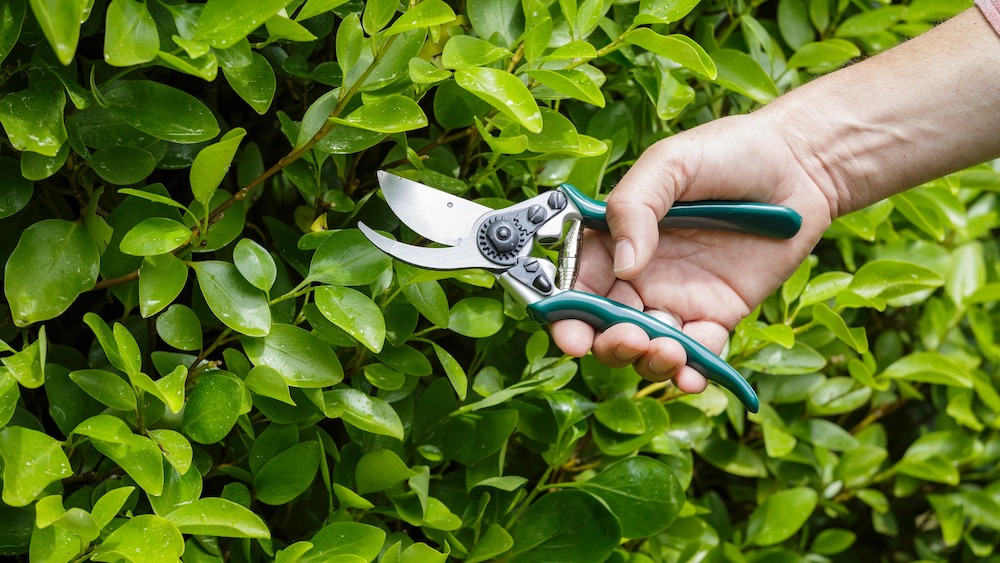
Basic Pruning Techniques
Pruning is a crucial part of maintaining the health and vitality of your plants. Here’s a step-by-step guide to the most basic pruning techniques:
1. Identify the Branch for Pruning:
The first step in pruning is to identify the branches that need to be removed. These may include dead or diseased branches, branches that cross or rub against each other, and branches that obstruct paths or views.
2. Choose the Right Tool:
Depending on the size of the branch, you’ll need different tools. Secateurs are perfect for small branches up to about 1/2 inch in diameter. For larger branches up to 1.5 inches, loppers are more suitable. For anything larger, you might need a pruning saw.
Chainsaws are one of the most dangerous tools available to the public, and I would recommend getting some training before you attempt to use one. AHCMOM213 – Operate and maintain chainsaws is the best ticket to gain from your local Registered Training Organisation (RTO).
When pruning hedges, a pair of hedging shears or a mechanical hedger is a good job. Be careful not to attempt pruning woody stems thicker than your pinkie finger with these tools to avoid shedding the bark with failed cuts.
3. Make the Cut:
Position your tool a few inches out from the tree’s trunk or main stem and make a clean cut. If you’re removing a large branch, use the three-cut method to prevent bark tearing: first, make a small cut on the underside of the branch about 12-18 inches out from the trunk.
Then, make a second cut a few inches further out from the first cut, cutting until the branch falls away. Finally, remove the remaining stub by cutting it off at the branch collar (the swollen area where the branch meets the trunk). This three-cut method will avoid tearing the bark, which can introduce infections and stress the plant.
4. Clean Your Tools:
After pruning, it’s always a good idea to clean your tools to prevent the spread of diseases. Use a solution of one part bleach to nine parts water to disinfect them.
Understanding Pruning Cuts
By this point, you’re probably still wondering “all of this is great, but where do I actually prune to along the branch?” Three primary types of cuts are commonly used: selective heading, non-selective heading, and removal cuts. Let’s go through each type of cut, when it’s best to use each one, and reasons you might favour one type over another.
Removal Cuts
Removal cuts involve cutting off a branch or stem completely at its point of origin at the branch collar at the trunk or the mother branch it sprouted from. When performed correctly, this type of cut should help the plant keep its natural shape.
Selective Heading Cuts
Selective heading cuts involve cutting back a stem or branch to a lateral branch that is at least one-third the size of the branch being removed. Like removal cuts, this method helps in reducing the size of a plant while maintaining its natural form and promoting healthy growth.
You can use this technique when you want to divert growth away from a pathway without altering the natural shape, or you want to cut some dead wood back to a fork.
Non-Selective Heading Cuts
Non-selective heading cuts, also known as shearing or hedge pruning, involve indiscriminately cutting back stems without considering the plant’s natural shape or the location of lateral branches.
This type of pruning promotes new lateral buds to sprout into lots of new branches, changing a plant’s natural shape. It’s commonly used on hedges or topiaries where a specific geometric shape is desired.

The ABCs of Pruning
There are a couple of three-letter acronyms to help us remember which branches to prioritise for pruning. Here are the ABCs and DDDs of pruning:
Assess
The first step in any pruning process is to assess. Look at your plant carefully. What shape is it naturally inclined to take? How healthy is it? Are there any signs of disease or pest infestation? Understanding the current state of your plant will guide you on how best to prune it.
This assessment should not be rushed; take your time to understand the plant’s growth pattern and overall health.
Bad Branches (the 3 Ds)
After assessing, the next step is to identify and remove the “bad” branches, often referred to as the 3 Ds: Dead, Damaged, and Diseased branches.
- Dead Branches: These are branches that have died and no longer produce leaves. They are often dry and brittle. Removing these branches helps prevent the spread of decay to the rest of the plant.
- Damaged Branches: These branches have been physically harmed, perhaps due to weather conditions, pests, or accidents. Damaged branches can stress the plant and provide entry points for diseases and pests.
- Diseased Branches: If a branch shows signs of disease, such as unusual coloration, growths, or deformities, it should be removed immediately to prevent the disease from spreading to the rest of the plant. Note that lichen may look questionable to the untrained eye, but they’re a perfectly healthy part of a garden and not a sign of plant disease.
Competing Branches
The final step is to deal with competing branches. These are branches that cross over each other or grow in such a way that they compete for the same space or light. By removing these, you can improve the structure of the plant, increase air circulation, and enhance light penetration, all of which contribute to the plant’s overall health and productivity.
Safety Precautions and Necessary Equipment
When pruning, it’s essential to ensure your safety. Always wear protective gloves and safety glasses to protect your hands and eyes from sharp tools and falling debris. Long-sleeved shirts and pants can protect your skin from thorns and rough bark.
When using machinery with sounds over 85dB like petrol hedge trimmers and vacuum blowers, ensure you’re using hearing protection as well.
Plant Habits & Their Pruning Needs
A plant “habit” is the shape and size they like to grow to. It’s naturally decided by their genes, and each plant’s habit should be respected when pruning. In this next section, we’ll go over a few plants and how to use good horticultural practices to prune them in ways they’re likely to respond positively to.
Westringias
Westringias, commonly known as Australian rosemary due to their rosemary-like leaves, are robust, hardy plants native to Australia. They’re revered for their versatility, drought tolerance, and the beautiful contrast their gray-green or variegated foliage provides against vibrant, typically blue or white, flowers.
Pruning westringias not only maintains their compact, bushy shape but also encourages more prolific flowering and fresh, colourful new growth. ‘Mundi’ Westringia fruticosa ‘WES05’ PBR is an exceptional variety that offers both aesthetic appeal and resilience.
This low-growing variety, also known as Mundi Coast Rosemary, is known for its compact form, dense grey-green foliage, and small white flowers that bloom from spring to summer. Its ability to thrive in a range of conditions, coupled with its minimal maintenance needs, makes it an attractive choice for gardeners.
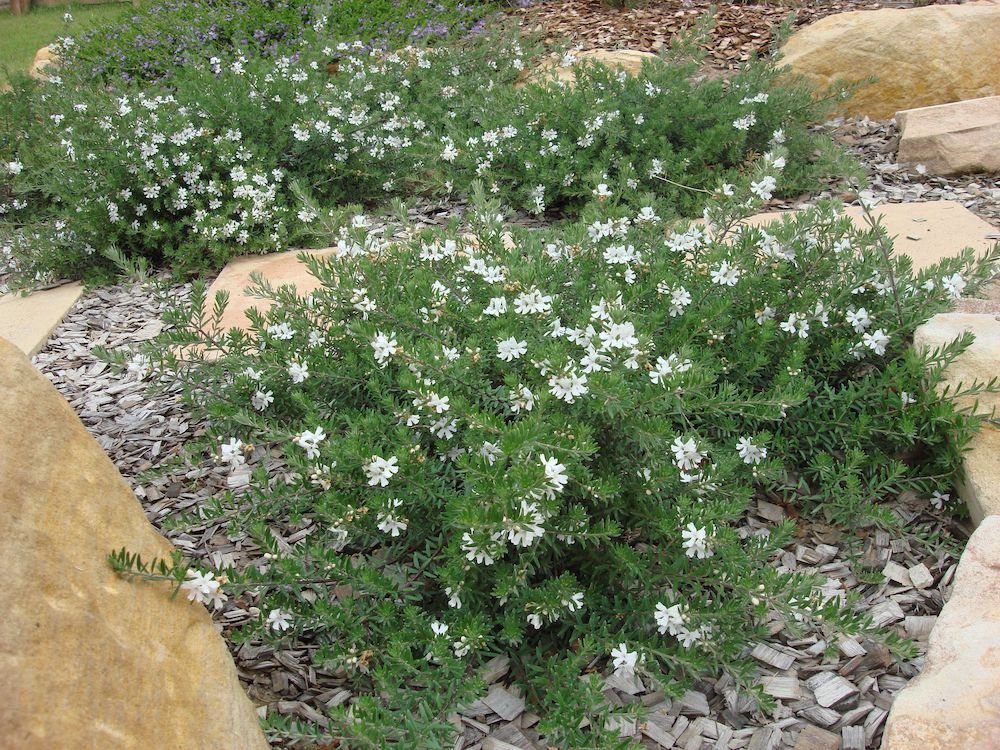
Incorporating ‘Mundi’ Westringia into a landscape is straightforward due to its versatile nature. It functions excellently as ground cover, creating a lush carpet of greenery that also suppresses weed growth. It can also be used for low borders or mass planting, adding a touch of elegance to pathways, garden edges, and open spaces.
The beauty of this plant lies not only in its visual appeal but also in its ability to attract beneficial pollinators with its delicate flowers. Pruning ‘Mundi’ is a breeze. It requires minimal trimming, mainly to maintain its compact shape and promote denser growth.
However, it can also be left to grow naturally, showcasing its rugged charm. A light prune after flowering can encourage a fresh flush of growth and more prolific blooming in the next season. Generally, you’d non-selectively shear the whole plant to achieve a hedge shape.
Grevilleas
Grevilleas are a captivating genus of flowering plants indigenous to Australia. Known for their striking foliage and vibrant, nectar-rich flowers, they’re a magnet for an array of birds and insects, adding a dynamic element to any garden.
With over 360 species, Grevilleas exhibit a vast range in size, shape, and growth habit. Species vary from petite shrubs perfect for compact gardens or container growing, to expansive, tree-like varieties that make a statement in larger landscapes.
“‘Gold Cluster’ Grevillea lanigera is a stunning variety that blends resilience with eye-catching aesthetics. It’s adored for its dense ground-covering habit and vibrant gold flowers. Flexible and sturdy, it suits a range of gardening styles and conditions, making it a desirable choice for both amateur gardeners and professional landscapers.

Incorporating ‘Gold Cluster’ Grevillea into your landscape can introduce an exceptional texture and colour palette. Its dense growth habit makes it an excellent ground cover, filling spaces with its dense, woolly foliage. The plant’s remarkable floral display, which primarily happens from winter to spring, can act as a feature in rockeries, borders, or native gardens.
Moreover, ‘Gold Cluster’ is an excellent wildlife attractor, inviting birds and beneficial insects with its nectar-rich blossoms typical of the Grevillea genus. Pruning ‘Gold Cluster’ is quite simple and largely depends on the preferred shape. For a natural form, focus on ‘removal cuts’ and ‘selective heading cuts’ to eliminate any dead or damaged wood and to guide growth away from pathways and other plants.
For more formal shapes or to maintain it as a dense ground cover, ‘non-selective heading’ cuts may be used where branches are trimmed back to a consistent length. The ‘Gold Cluster’ Grevillea offers an opportunity to introduce a touch of hardiness and beauty to your garden while also contributing to local biodiversity. Its low-maintenance nature and captivating presence make it a must-have for any garden or landscape.
Bottle Brushes, a.k.a. Callistemons
Callistemons, commonly known as bottlebrushes due to their cylindrical, brush-like flowers, are another staple in many Australian gardens. Their vibrant red, pink, or yellow blossoms bring a splash of colour, typically peaking in spring and early summer, but some varieties offer sporadic flowering throughout the year.
Slim™Callistemon viminalis ‘CV01’ PBR is a striking and unique variety.
Also known as the Slim Bottlebrush, it’s recognised for its slender growth habit and vibrant red bottlebrush flowers. It stands out with its ability to grow tall while maintaining a narrow form, making it exceptionally appealing for landscapes where space is limited but height is desired.
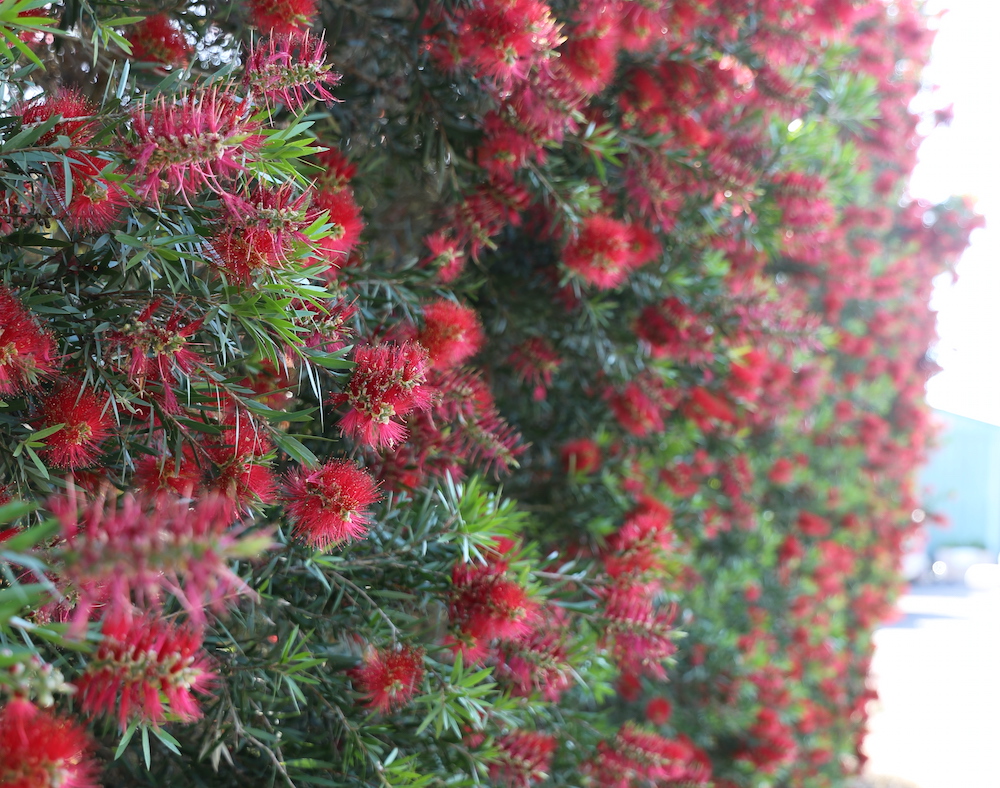
Incorporating ‘Slim’ Callistemon into your landscape offers numerous possibilities. Its natural columnar shape makes it perfect for creating privacy screens in front of windows or windbreaks without taking up too much horizontal space.
Additionally, it can be used to create a vertical accent in mixed borders or planted in narrow beds along walls or fences. In the spring and early summer, ‘Slim’ Callistemon comes alive with bright red flowers, adding a pop of colour and attracting a variety of birds and pollinators to your garden. Pruning ‘Slim’ depends largely on your desired outcome.
If you’re aiming to maintain its natural, slender shape, focus on ‘removal’ and ‘reduction’ cuts to remove any deadwood or to direct growth gently. For a bushier appearance, ‘selective heading’ cuts can be employed, shortening specific branches to encourage denser growth.
Lomandras
Lomandras, Australia’s native grass-like matt rushes, are a popular choice for many gardens due to their hardiness, low maintenance, and pleasing aesthetics. These perennial plants, known for their clumping growth habit, are excellent for preventing soil erosion and thrive in various environments. When it comes to pruning them, there are a few key things to note.
Although lomandras do have a stem, it’s not immediately visible due to the close proximity of the nodes from which the leaves grow. This gives the plant its distinct clumping form. As lomandras mature, the stem becomes more evident but often remains hidden within the dense foliage.
To keep a lomandra looking neat and tidy, you can shape the plant into a dome by shearing the long, strappy leaves into shape. Or, you can simply let it keep its natural, glorious shape as long as it isn’t obstructing pathways.
When this happens, you can regularly shear the leaves back, or remove whole plants so that the plants behind have enough room to express their whole habit. These removed rhizomes can be propagated. However, you should know that plants with plant breeder’s rights (PBR) can’t be regrown to sell.
They can only be propagated for yourself. Nurseries use special growing methods for some varieties, like tissue culture, and it might be easier to buy new plants instead. As leaves die or become discoloured and damaged over time, these can be individually removed right at the base, near the stem, to maintain the overall health and appearance of the plant.
Tanika® Lomandra longifolia ‘LM300’ PBR is a robust yet attractive variety that brings texture, form, and year-round interest to any garden.
‘Tanika’ Lomandra is renowned for its compact habit, featuring arching green leaves that form a neat, clumping grass-shaped clump. The appeal of this plant extends beyond its visual charm. It’s incredibly hardy, drought-tolerant, and maintains its lush appearance even in challenging conditions, making it a favourite among both landscapers and home gardeners.
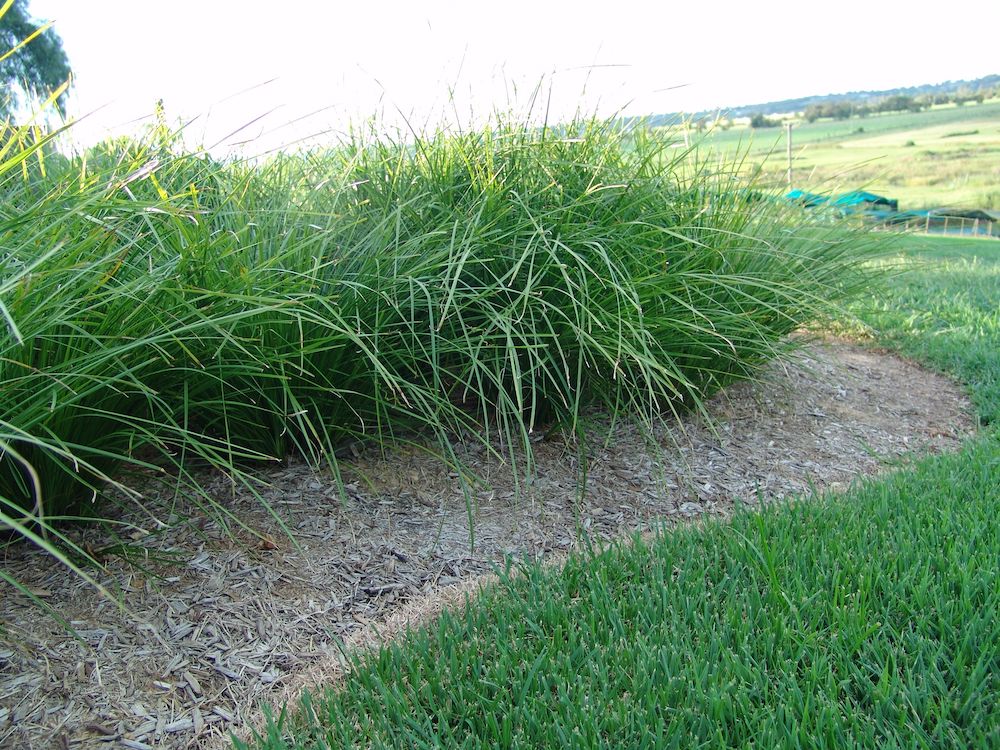
Incorporating ‘Tanika’ into your landscape opens a world of possibilities. Its fine, graceful foliage makes it an excellent choice for mass planting, creating a sea of green that adds depth and texture to your garden. Alternatively, ‘Tanika’ Lomandra can be used as a border plant or as an accent in rockeries. Its adaptability allows it to thrive in a range of light conditions, from full sun to deep shade, and in various soil types.
Anigozanthos, a.k.a. Kangaroo Paw
Anigozanthos, fondly known as Kangaroo Paw, is a plant that is as intriguing as it is beautiful. Native to Australia, this plant is distinguished by its unique, velvety leaves and bold, vibrant flowers that uncannily resemble a kangaroo’s paw. The flowers range in color from brilliant reds and oranges to soothing greens, making a striking visual impact.
Like lomandras, their habit is as a clump of strappy leaves attached to a short stem that may be hard to find due to the short nodes and abundant foliage. You can prune the leaves into a dome, but why not simply remove the dead leaves and allow them to keep their strappy habit.
If the sea of plants become too dense, selective heading cuts can be used to thin out specific stems and open up some space. ‘Regal Velvet’ Anigozanthos hybrid is a captivating variety of the beloved Kangaroo Paw plant.
Featuring tall, vibrant red flowers that resemble the shape of a kangaroo’s paw, this plant presents an upright habit, with its unique blooms held high above strappy green foliage. Its appeal lies not only in its visual impact but also in its resilience, as it’s both drought and frost tolerant.
Incorporating kangaroo paws like this into a landscape can add significant aesthetic value. The bright, unusual flowers provide a striking contrast to more traditionally shaped blooms, making it a fantastic feature plant.
It’s also suitable for mass planting, where it can create a sea of vibrant colour. Furthermore, kangaroo paws are known for attracting birds and bringing a touch of the Australian bush into your backyard.
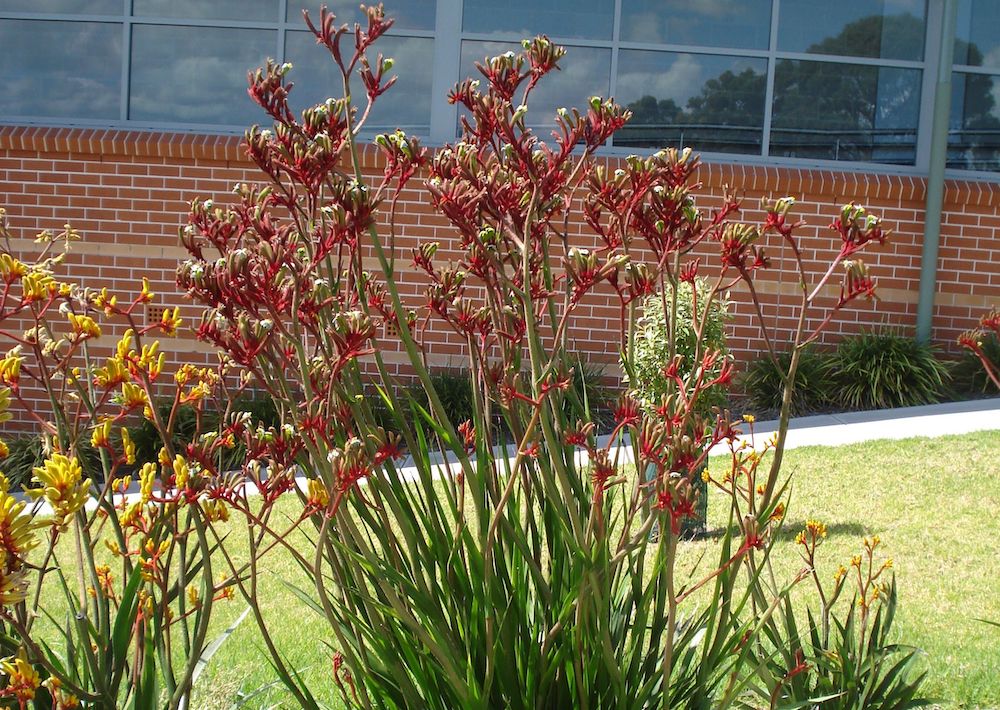
Daniel’s Wrap
Pruning is not merely a technique but an art that fosters healthier, more vigorous plant growth and enhances the aesthetic appeal of your garden. Whether you’re shaping hedges or maintaining the natural form of native plants, understanding the types of cuts and when to use them can significantly improve your gardening practices.
Remember, each cut is a call to the plant on how and where to grow, so it’s crucial to prune with purpose and precision. From removal cuts to non-selective heading cuts, each has its unique role and impact on plant health and growth.
Pruning might seem daunting at first, especially with the myriad of tools and techniques involved. But with time, patience, and practice, you’ll find it becoming second nature.
Keep in mind the specific needs of your plants, as they each require specialised care. As we wrap up our Pruning 101 guide, we encourage you to step into your garden with newfound confidence and knowledge.
Remember, the key to a healthy garden lies not just in watering and feeding your plants, but also in the careful and timely act of pruning. So, grab those seccies, saw or shears and give your garden the care it deserves.
We hope this article has been informative and inspiring for both home gardeners and landscape professionals alike. Happy pruning!

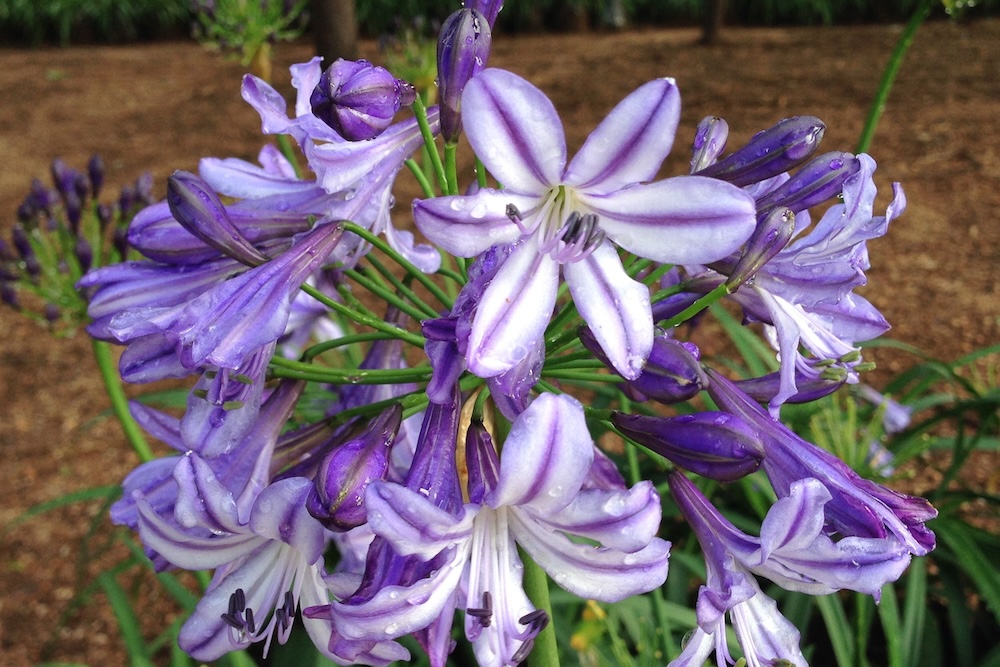
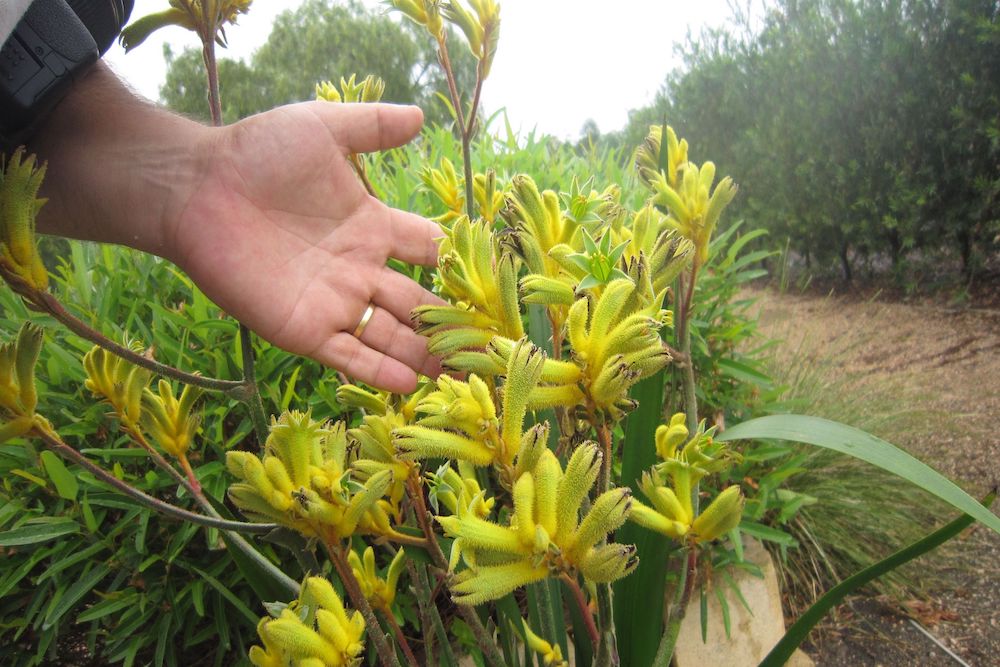
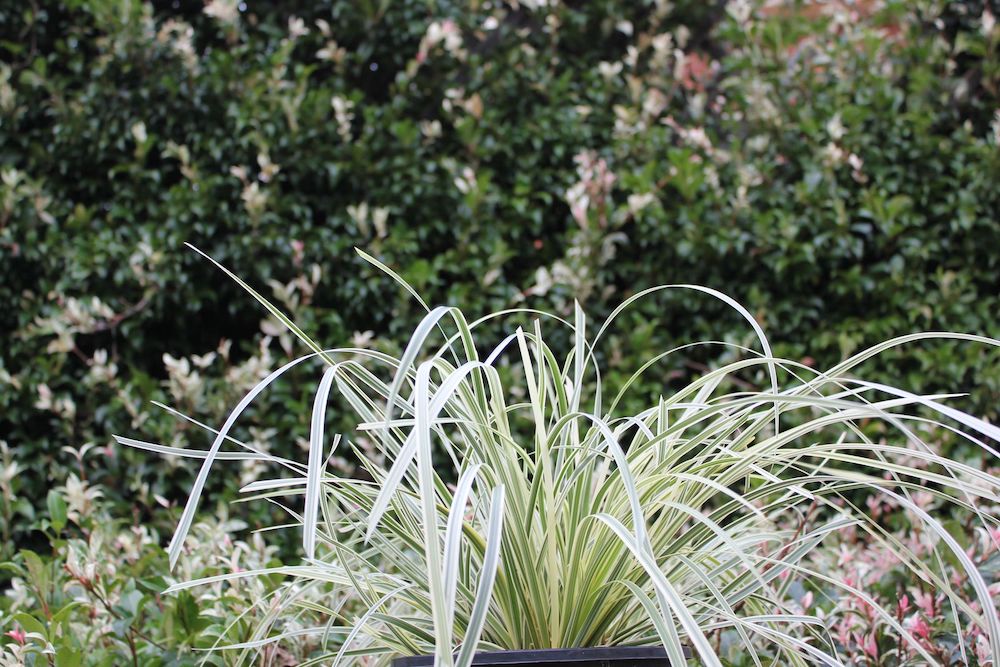
This Post Has 0 Comments